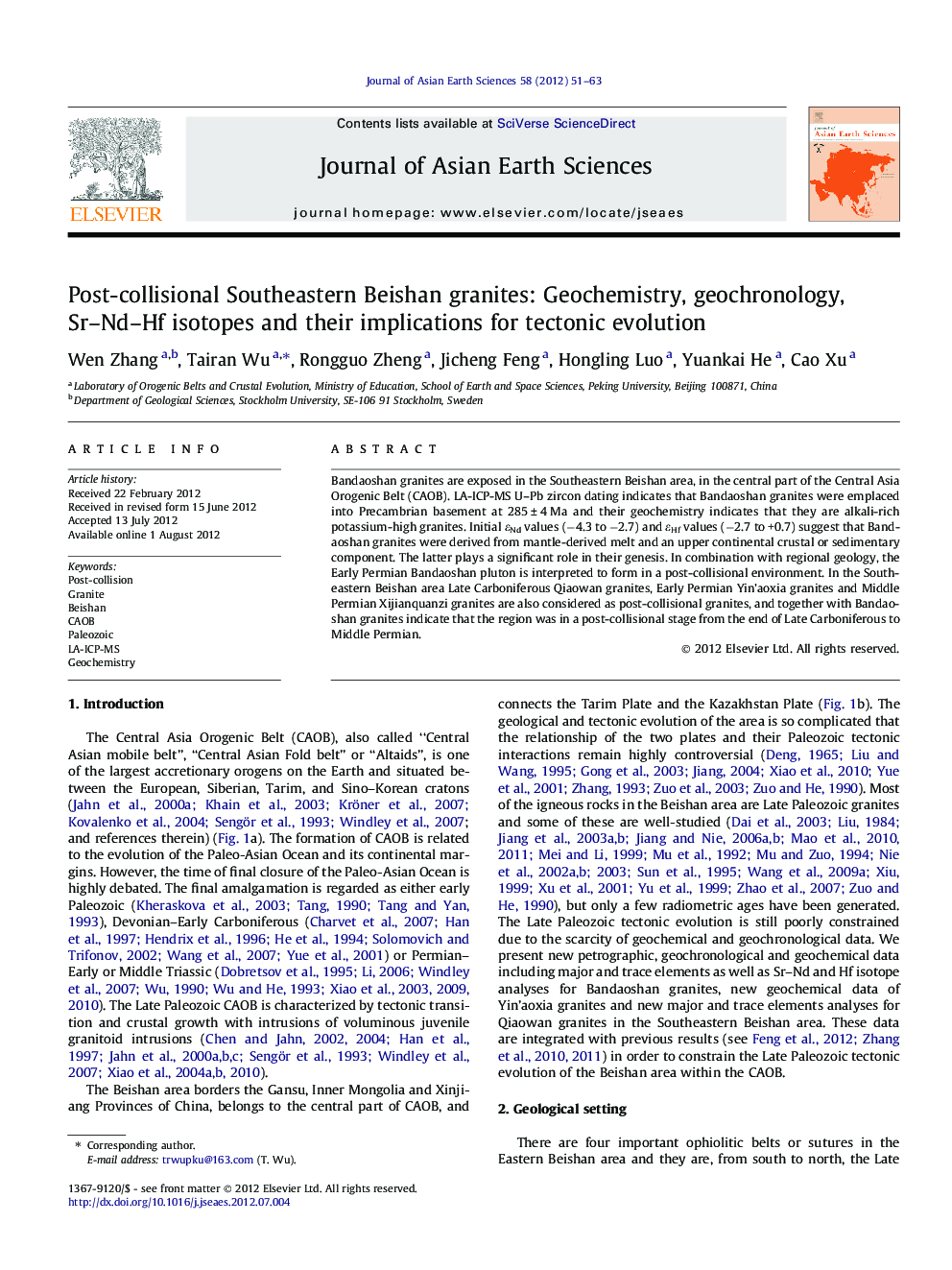| Article ID | Journal | Published Year | Pages | File Type |
|---|---|---|---|---|
| 4731469 | Journal of Asian Earth Sciences | 2012 | 13 Pages |
Bandaoshan granites are exposed in the Southeastern Beishan area, in the central part of the Central Asia Orogenic Belt (CAOB). LA-ICP-MS U–Pb zircon dating indicates that Bandaoshan granites were emplaced into Precambrian basement at 285 ± 4 Ma and their geochemistry indicates that they are alkali-rich potassium-high granites. Initial εNd values (−4.3 to −2.7) and εHf values (−2.7 to +0.7) suggest that Bandaoshan granites were derived from mantle-derived melt and an upper continental crustal or sedimentary component. The latter plays a significant role in their genesis. In combination with regional geology, the Early Permian Bandaoshan pluton is interpreted to form in a post-collisional environment. In the Southeastern Beishan area Late Carboniferous Qiaowan granites, Early Permian Yin’aoxia granites and Middle Permian Xijianquanzi granites are also considered as post-collisional granites, and together with Bandaoshan granites indicate that the region was in a post-collisional stage from the end of Late Carboniferous to Middle Permian.
► Southeastern Beishan area was in a post-collisional stage from the end of Late Carboniferous to Middle Permian. ► Mantle and crust mixing magma indicated. ► Phanerozoic crustal growth in CAOB implicated.
